Vanadium Compounds in Emerging Electronics, Electrics, Cooling: Markets, Technologies 2024-2044
PDF Download Report
Single User License - Allowing one user access to the product.
Site License - Allowing all users within a given geographical location of your organisation access to the product.
Enterprise License - Allowing all employess within your organisation access to the product.
PDF Download Report
Single User License - Allowing one user access to the product.
Site License - Allowing all users within a given geographical location of your organisation access to the product.
Enterprise License - Allowing all employess within your organisation access to the product.
PDF Download Report
Single User License - Allowing one user access to the product.
Site License - Allowing all users within a given geographical location of your organisation access to the product.
Enterprise License - Allowing all employess within your organisation access to the product.
Sample Pages
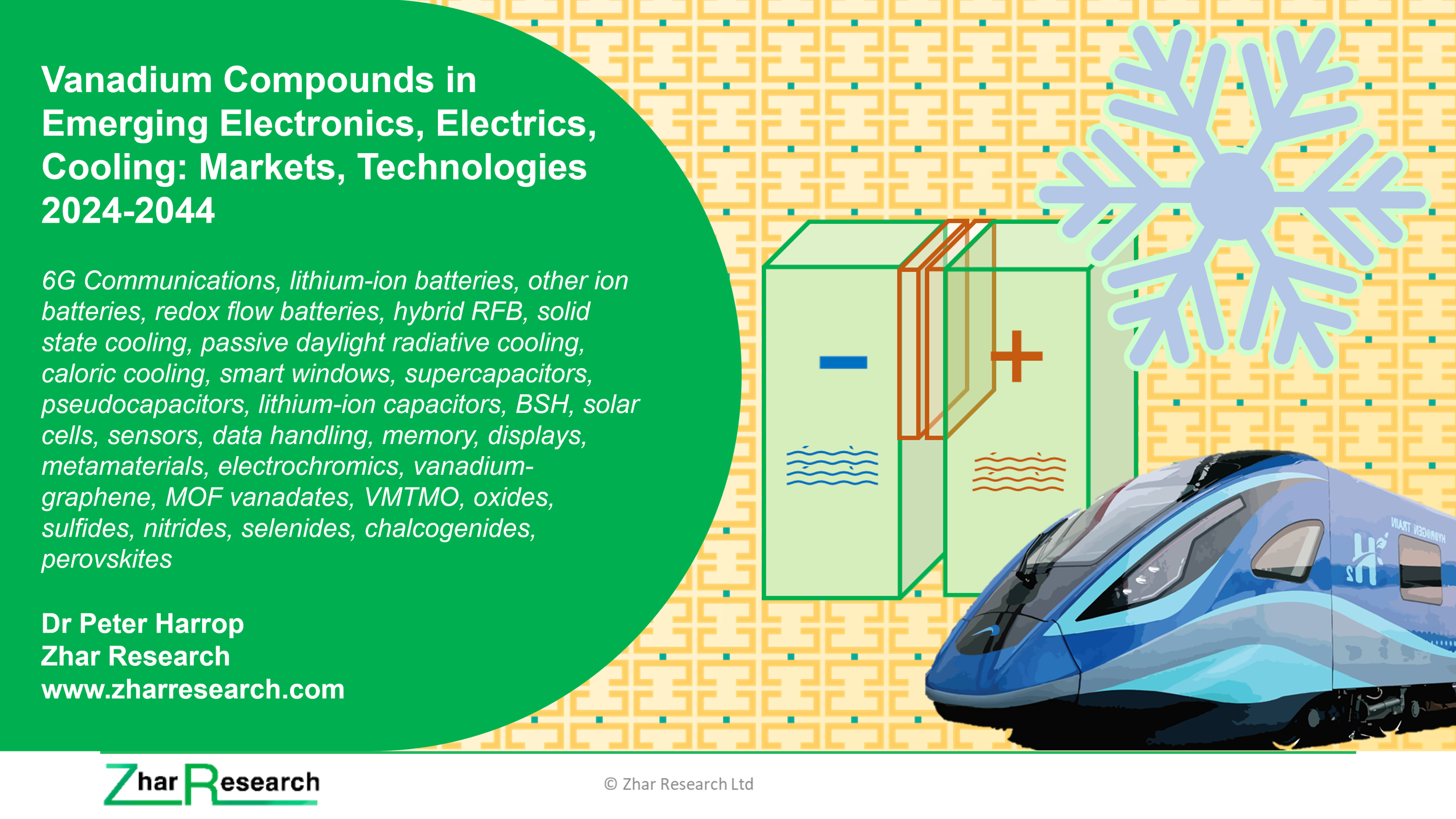
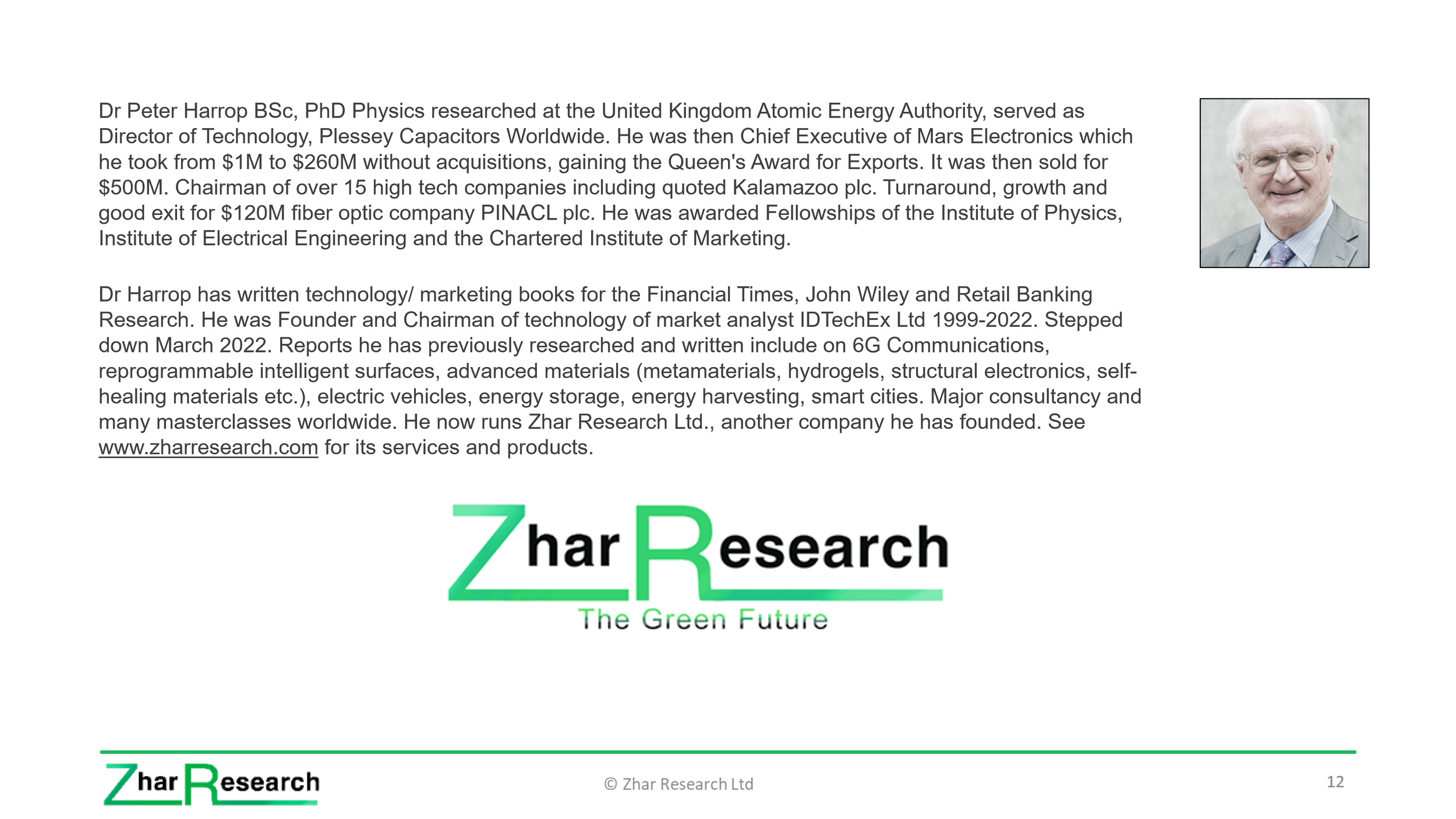
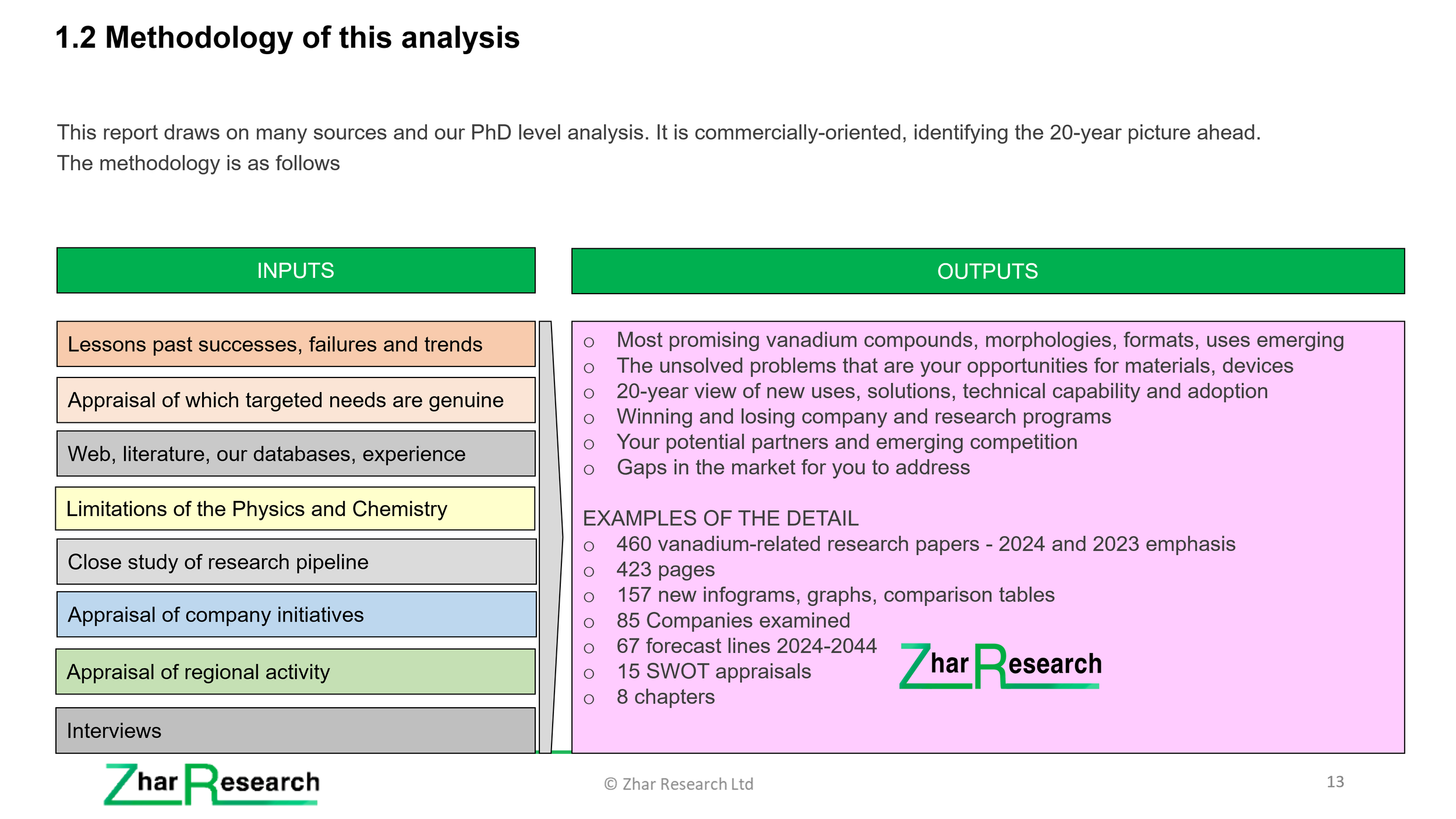

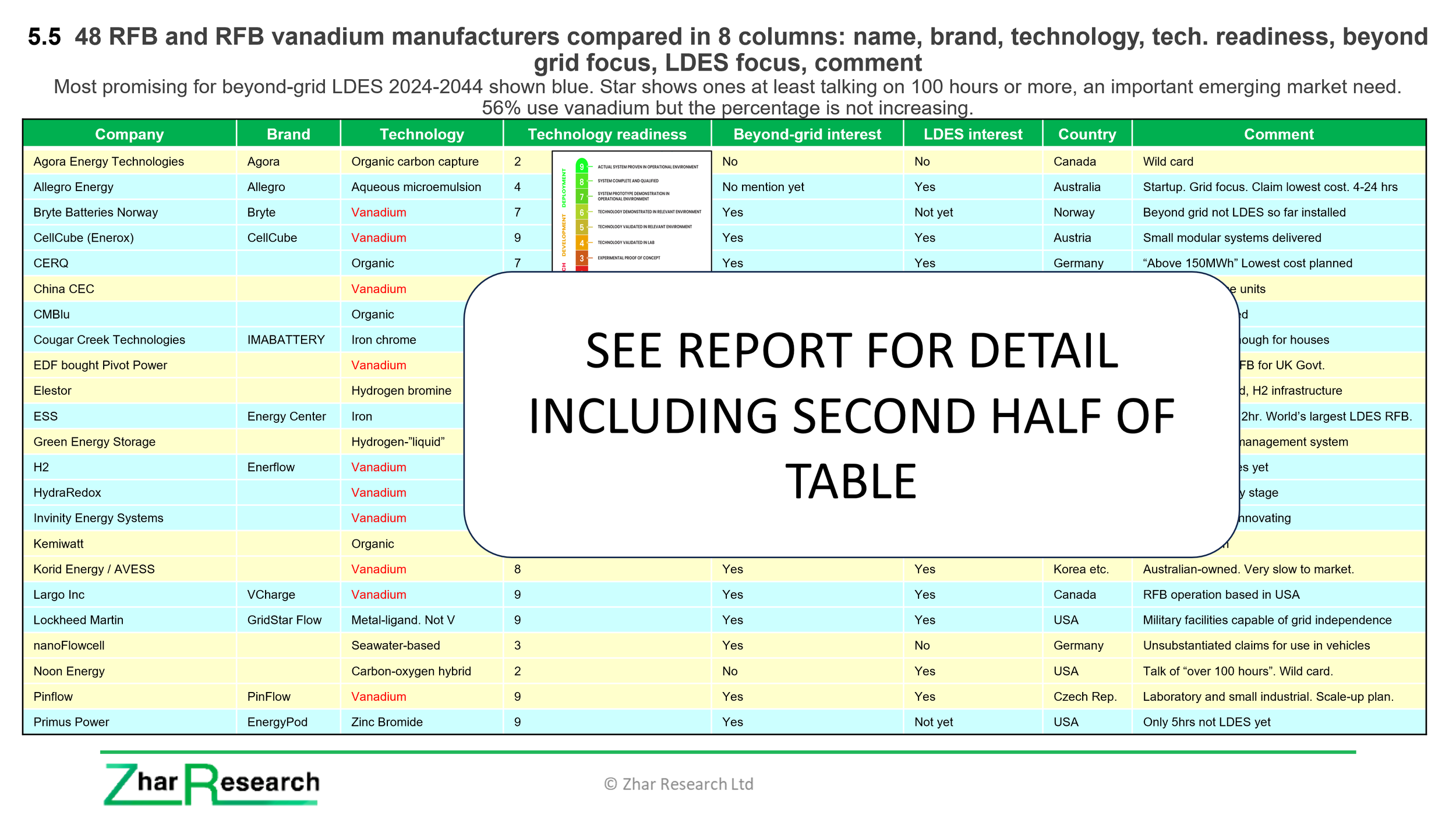
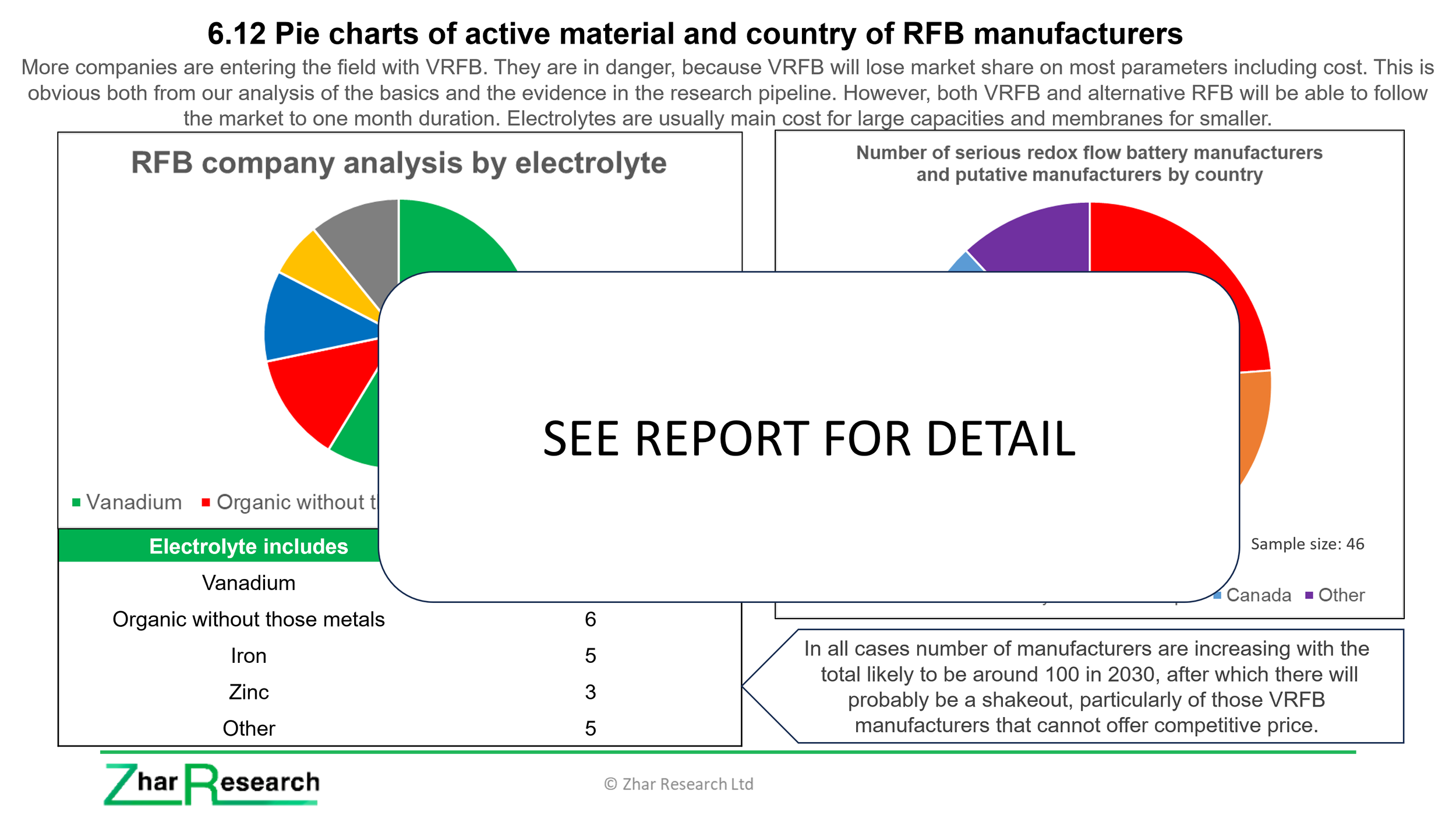
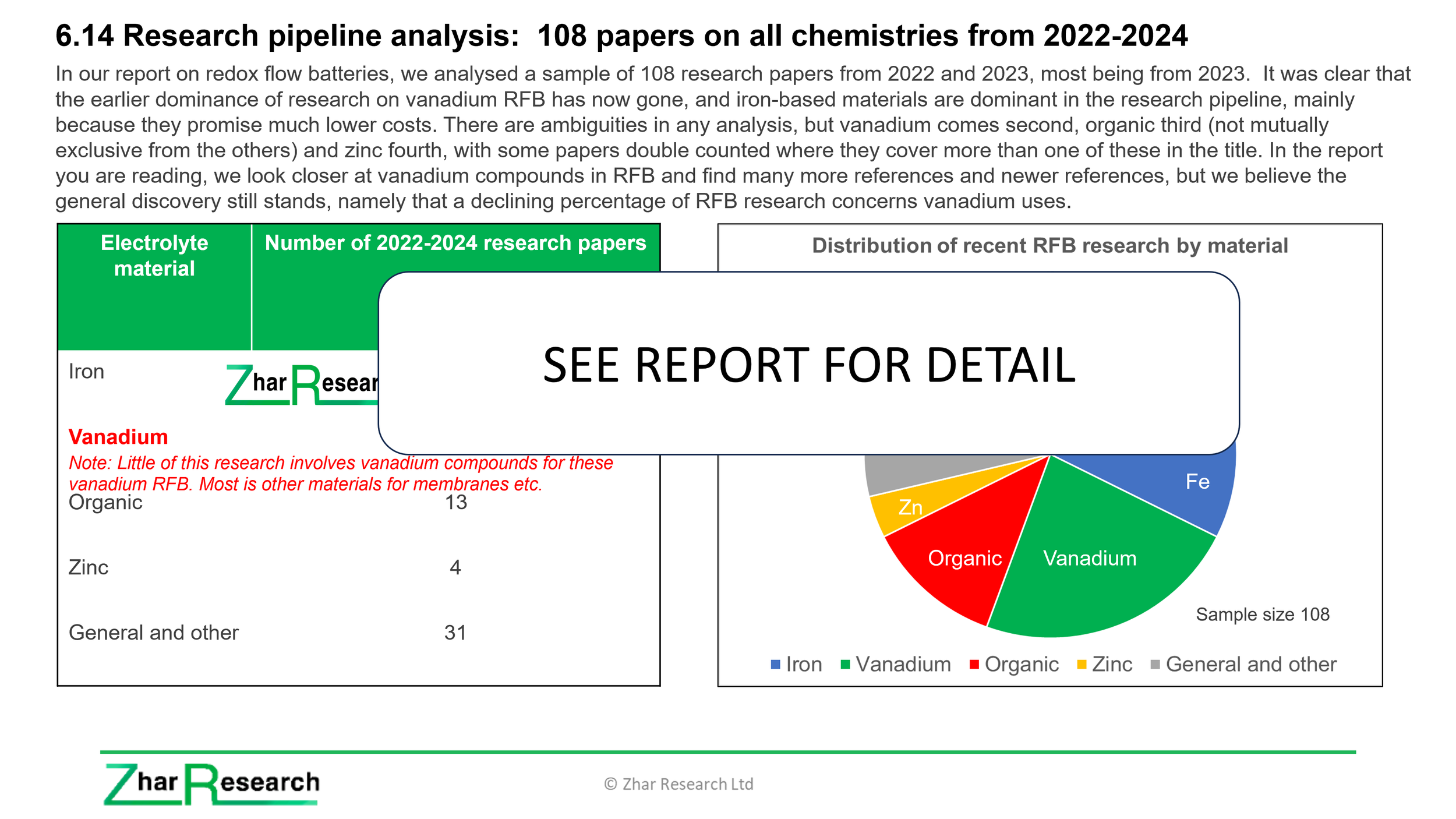
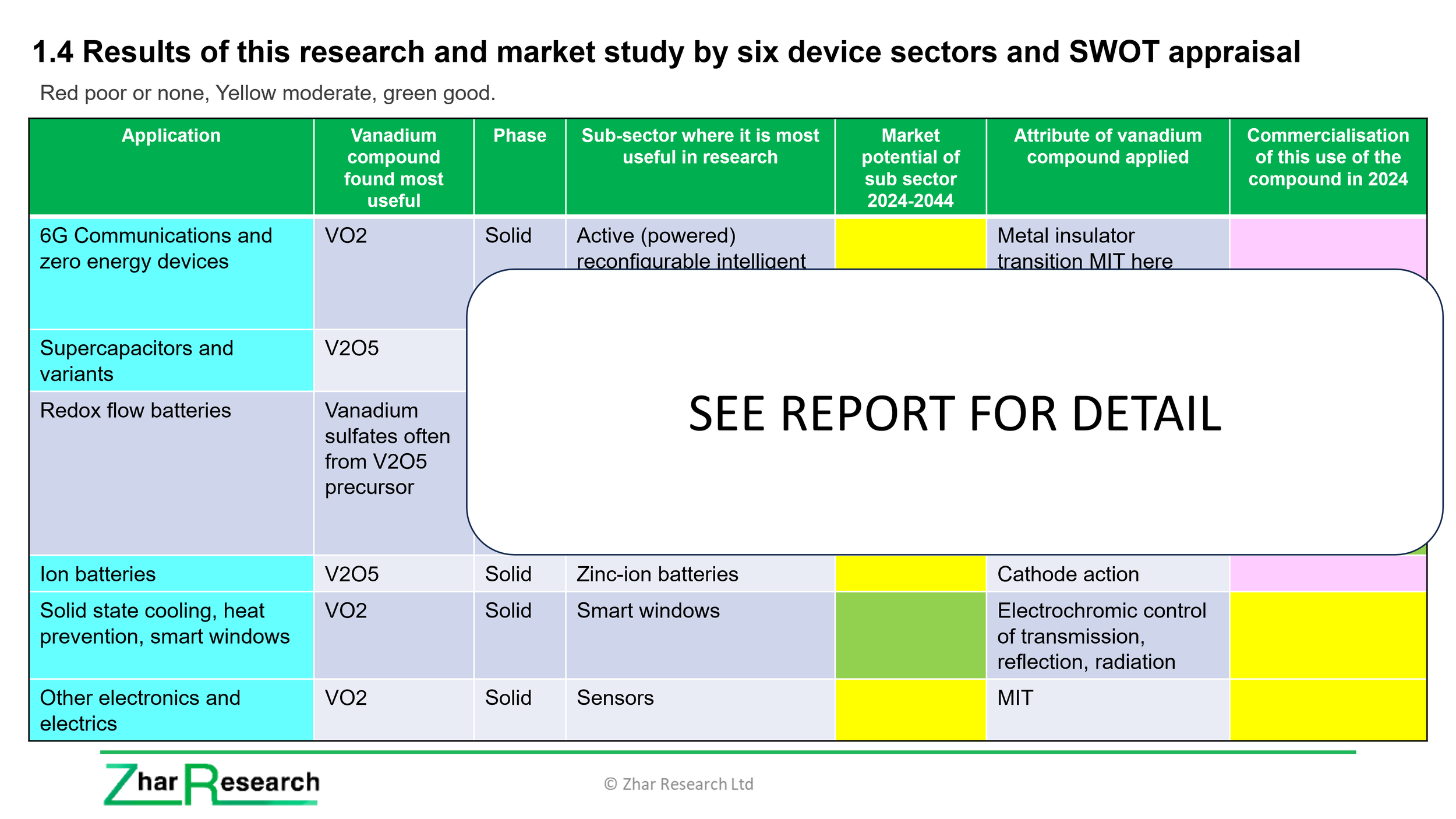
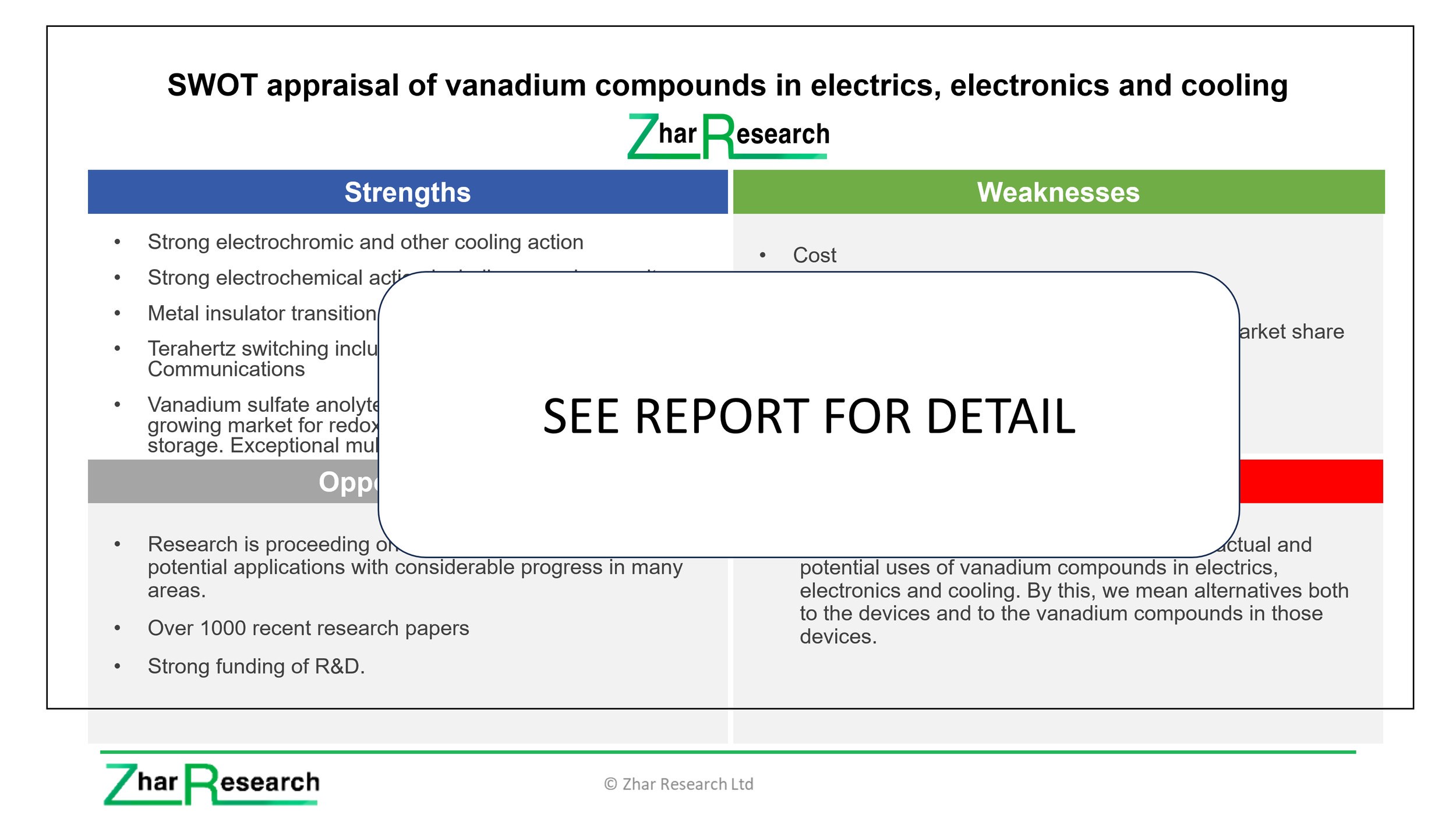
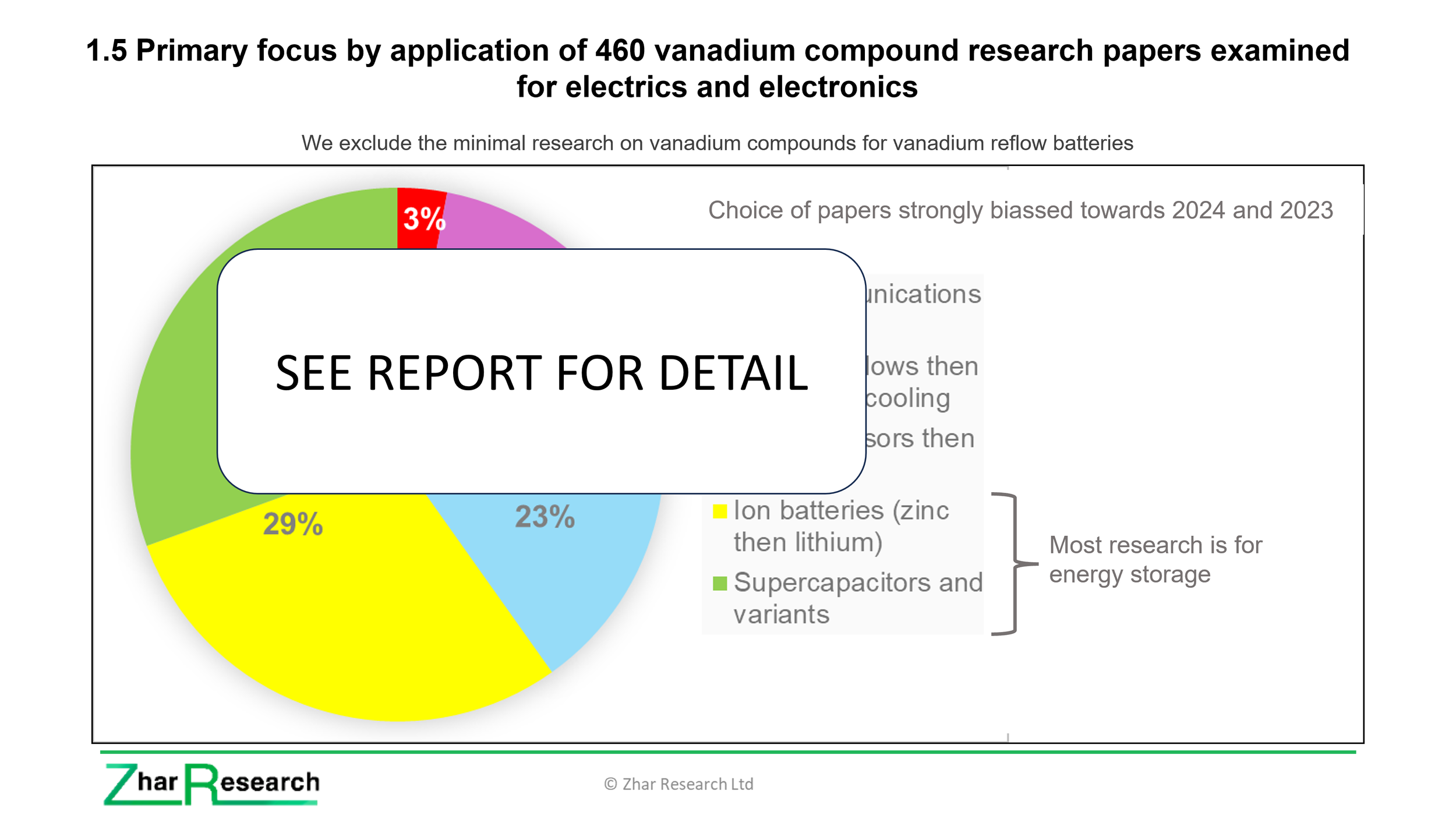
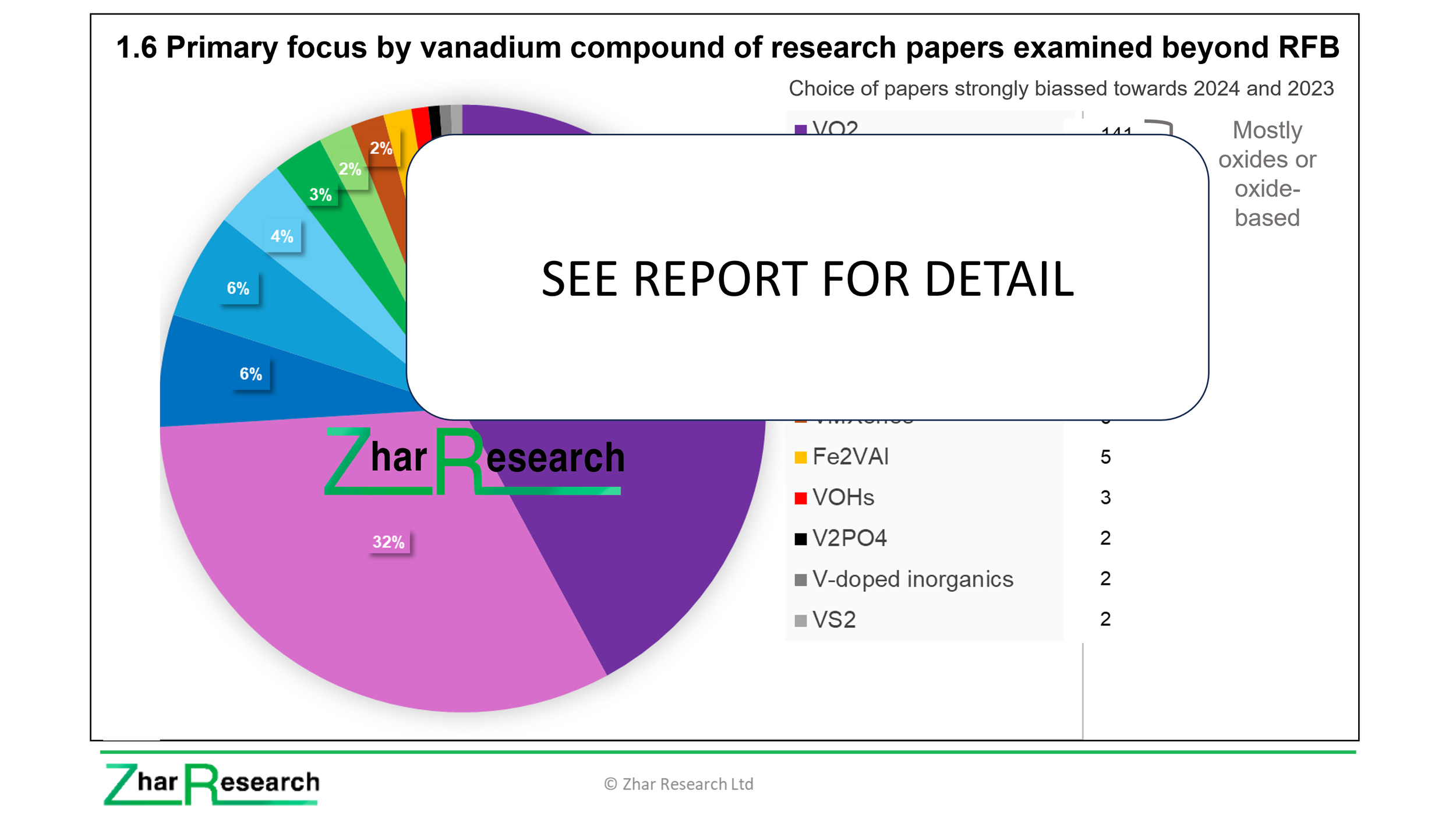
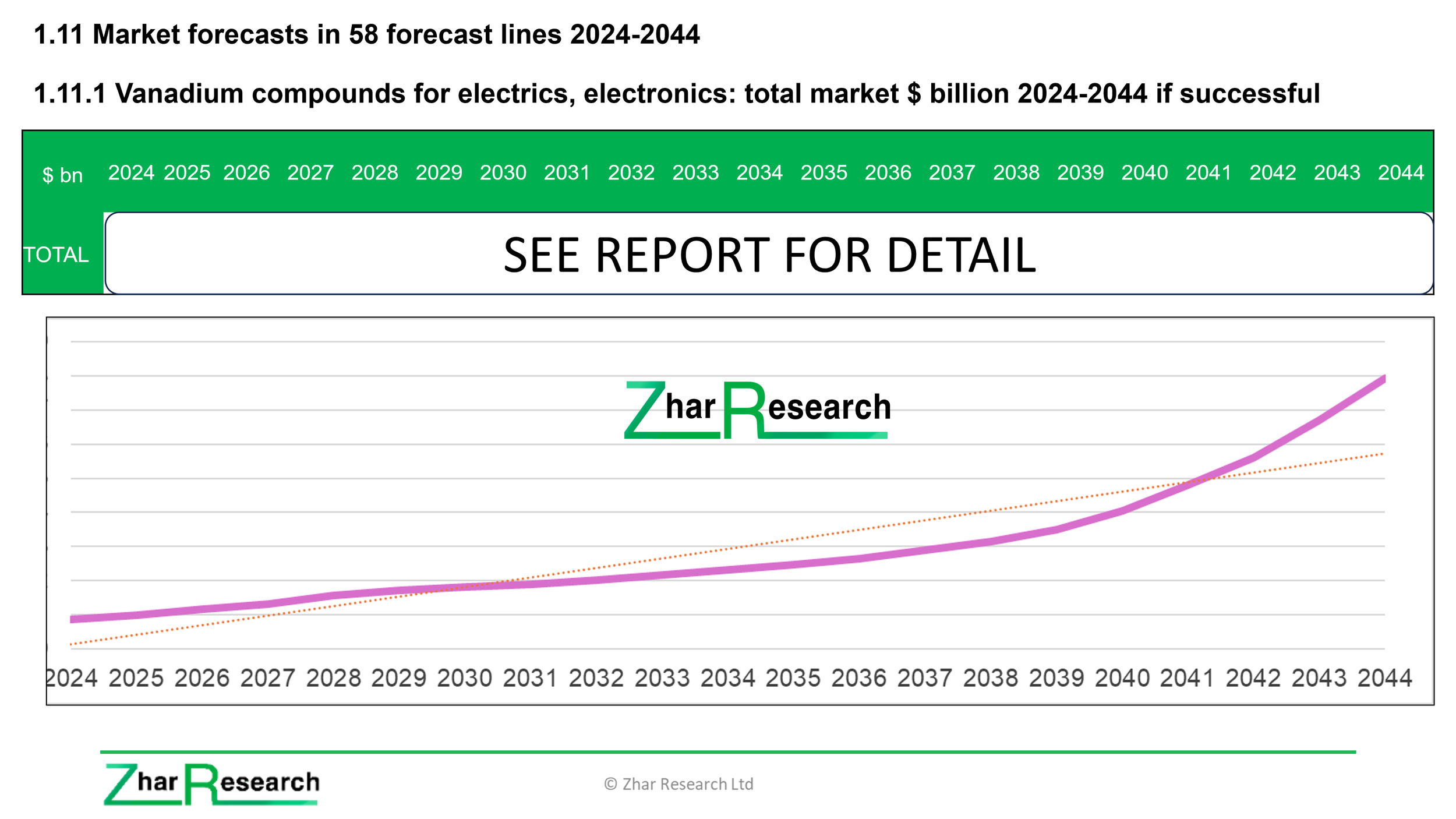
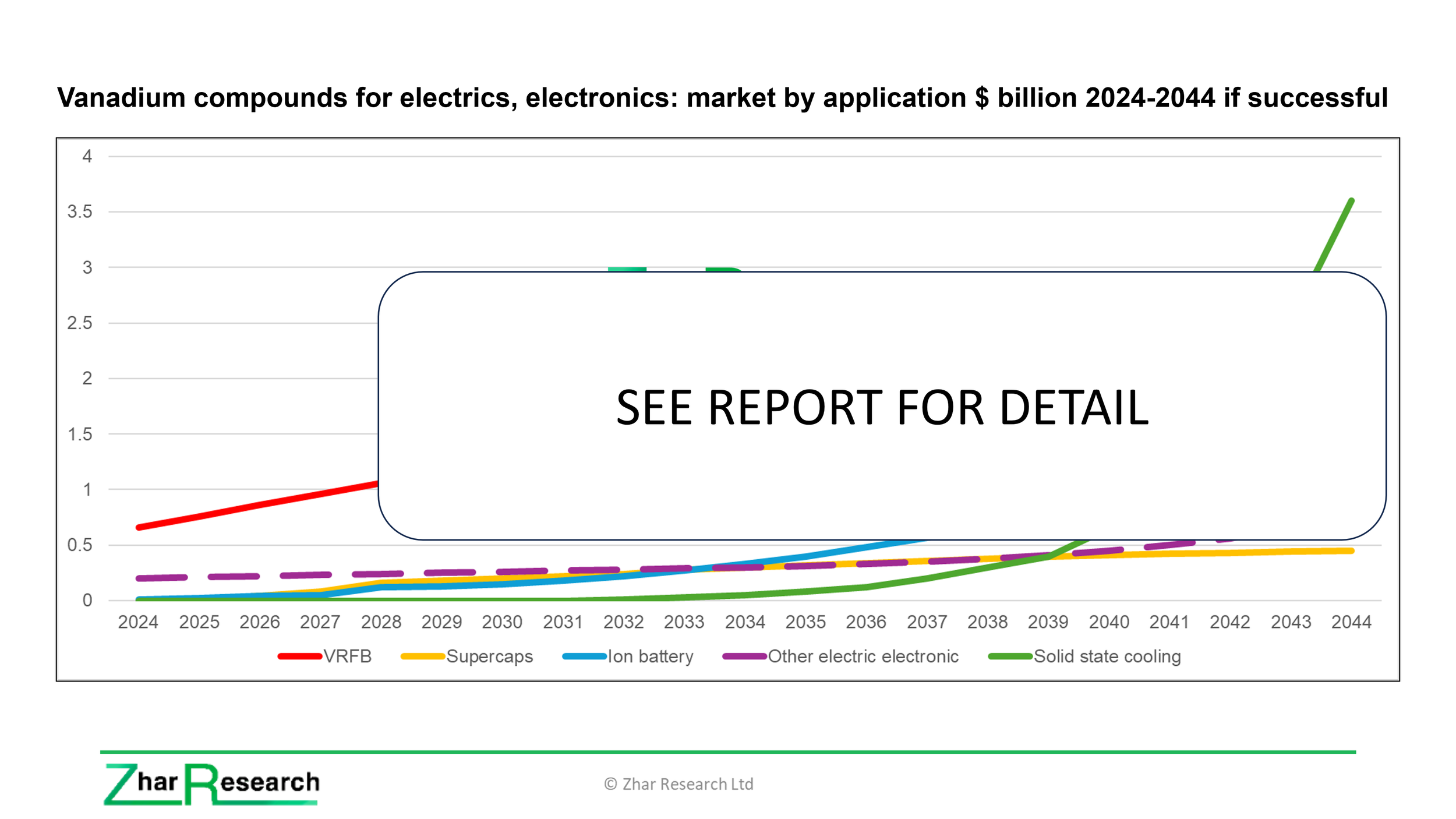
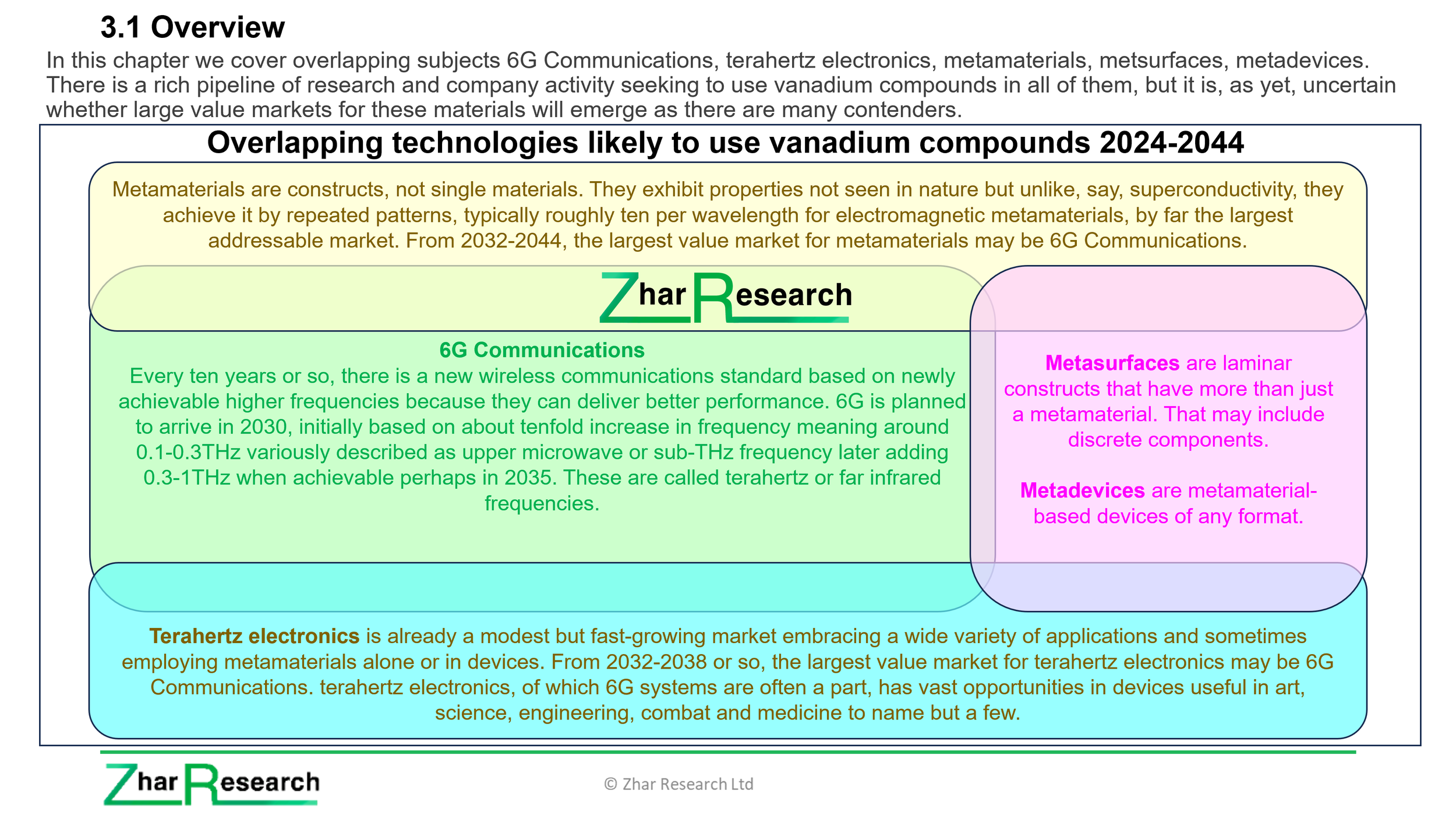
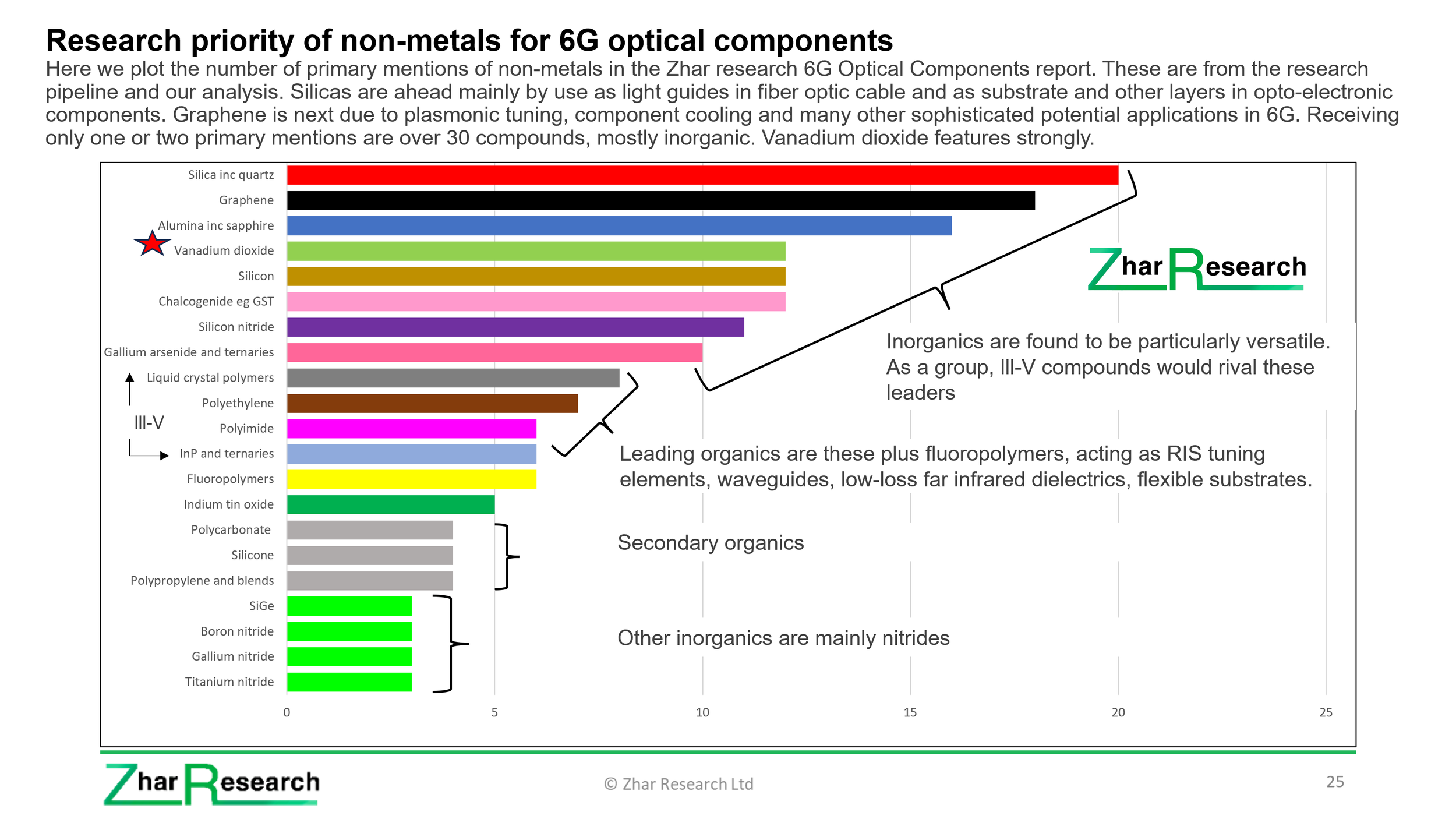
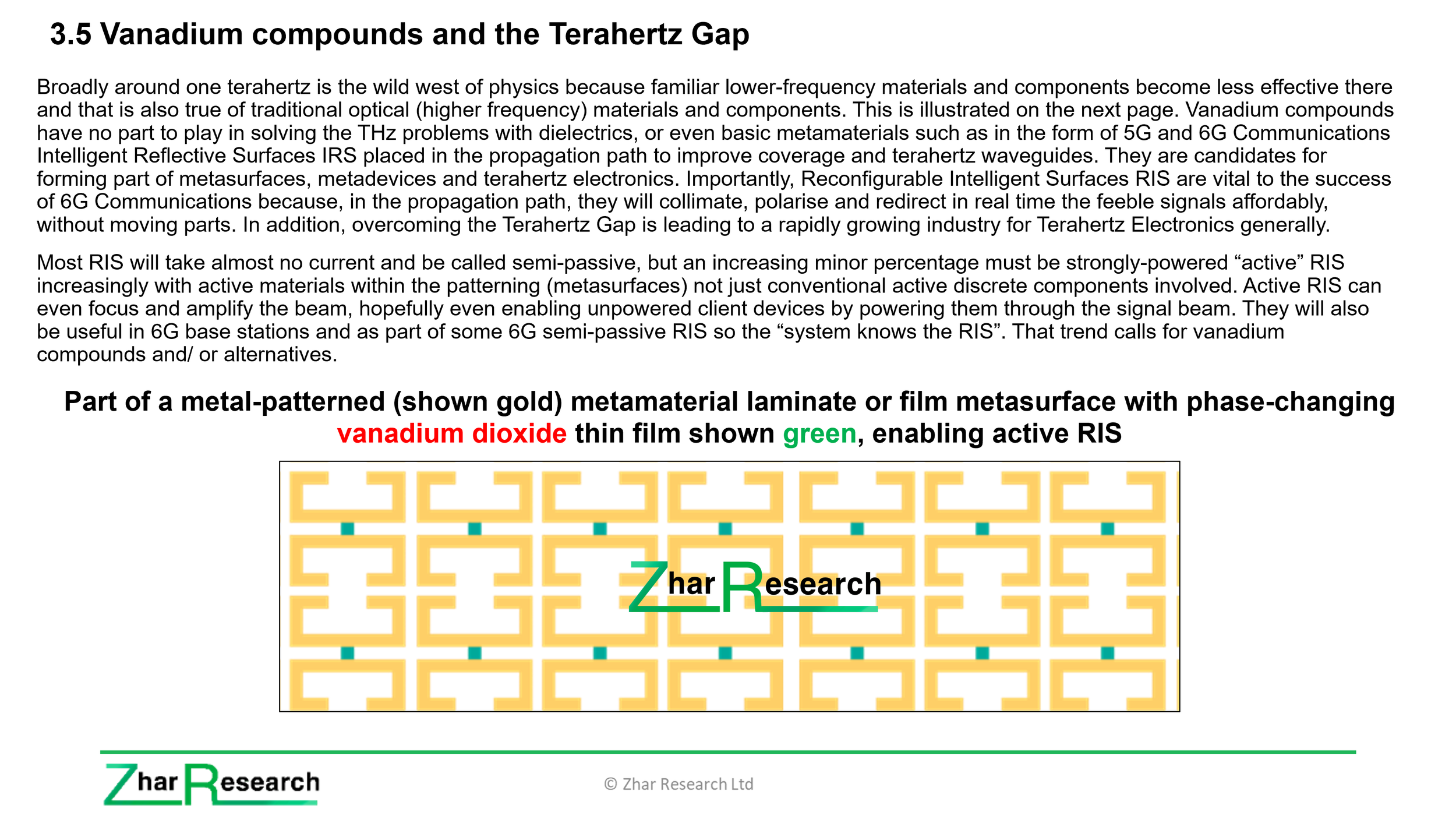

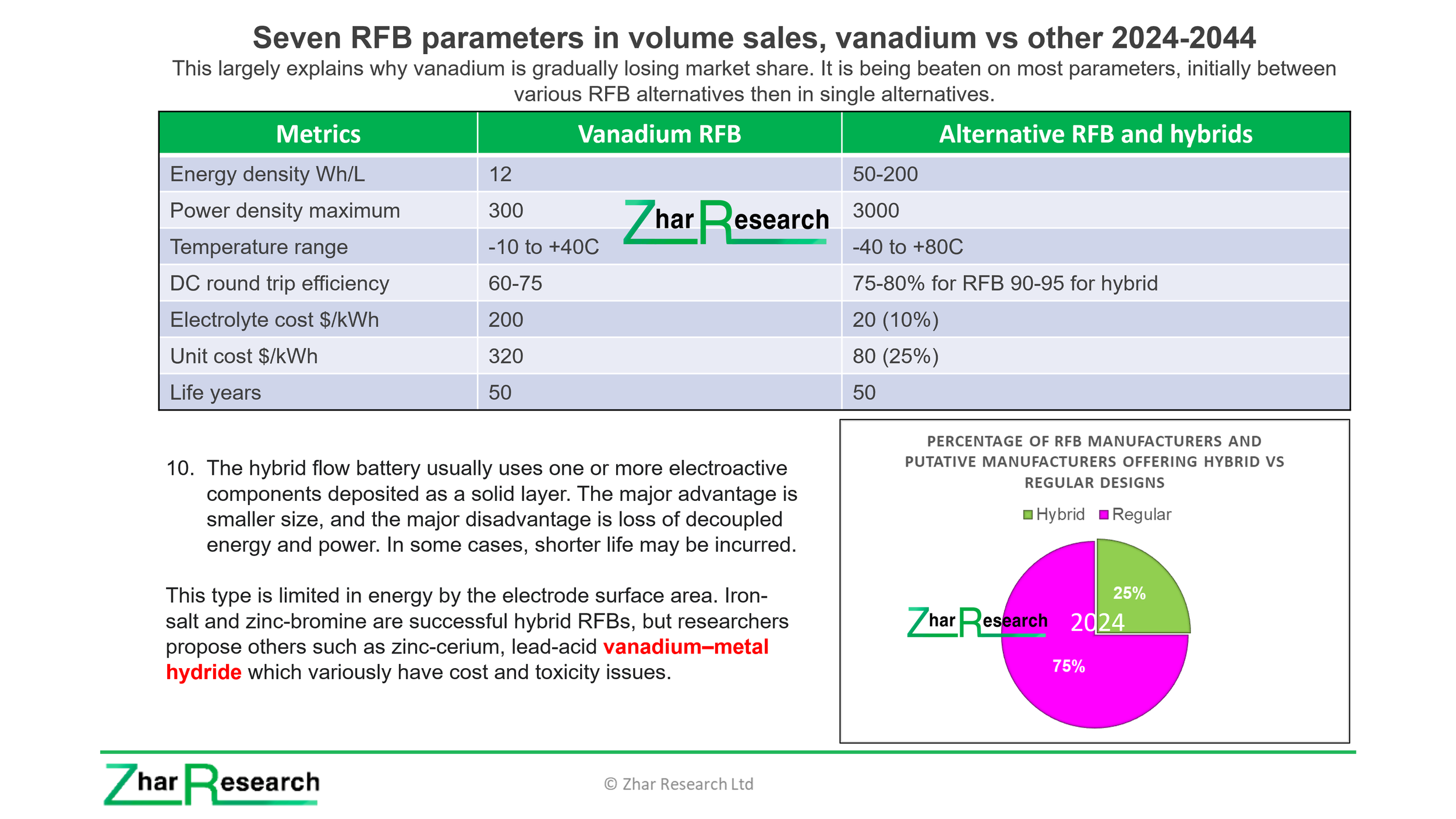
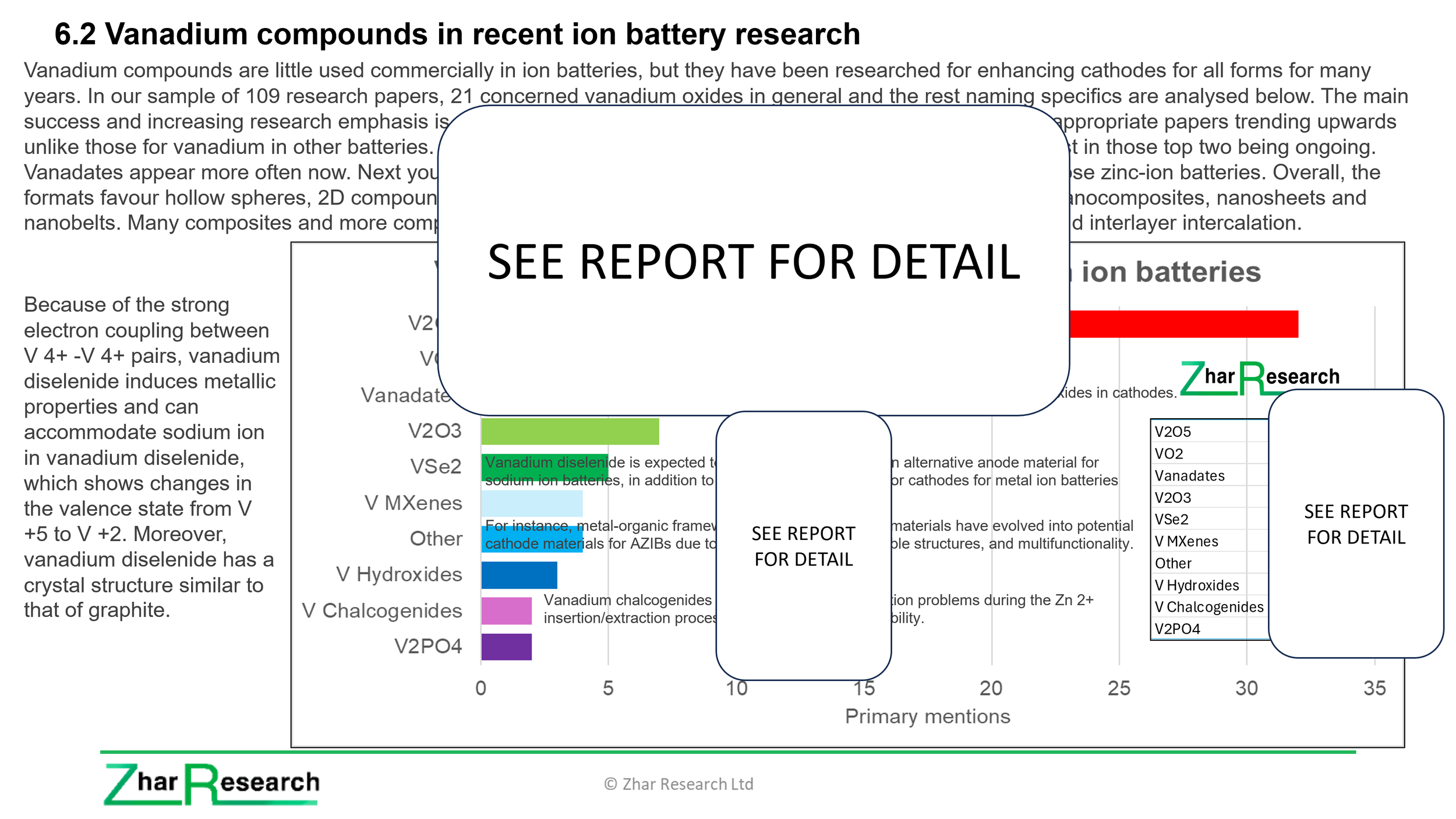
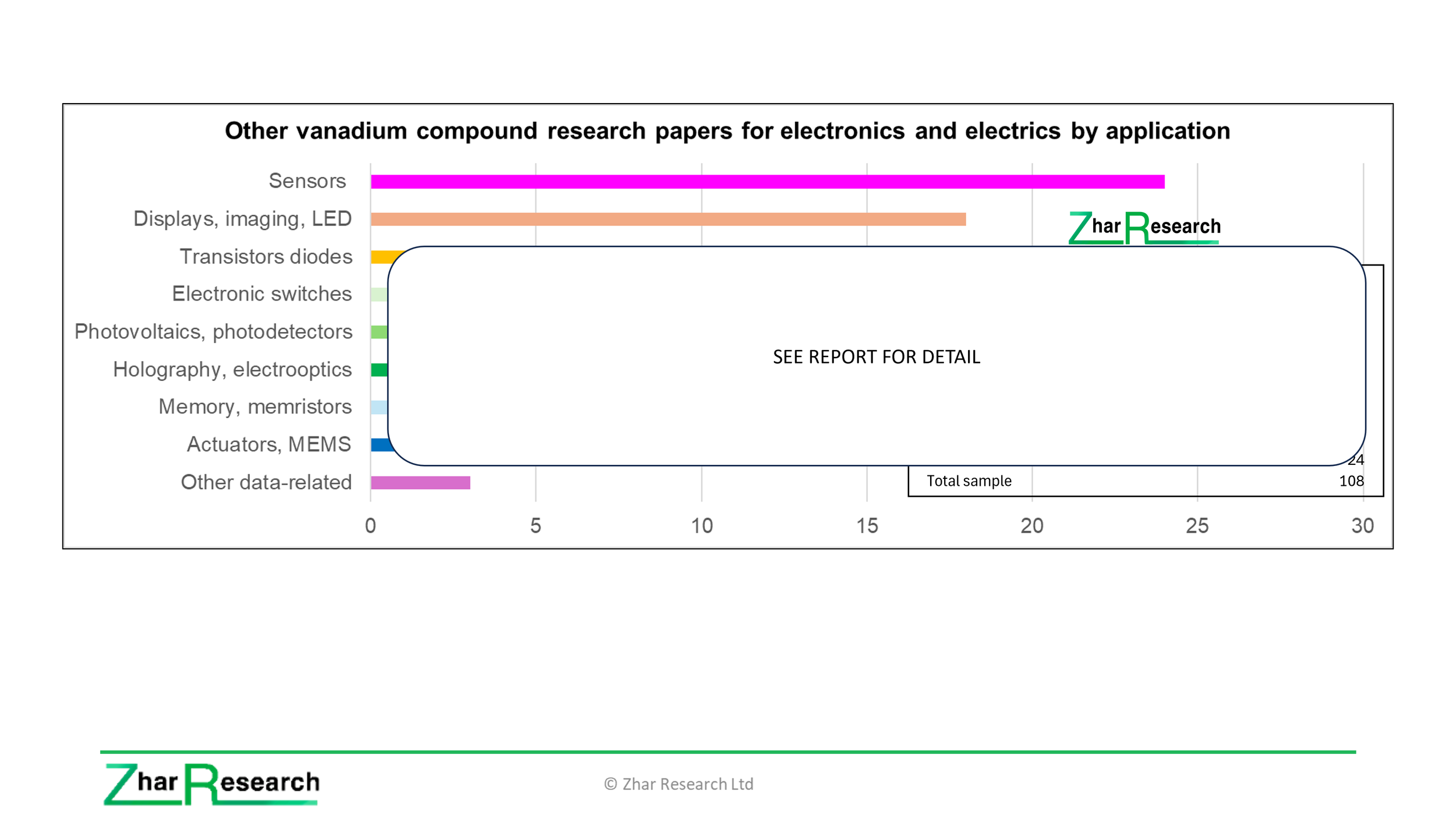
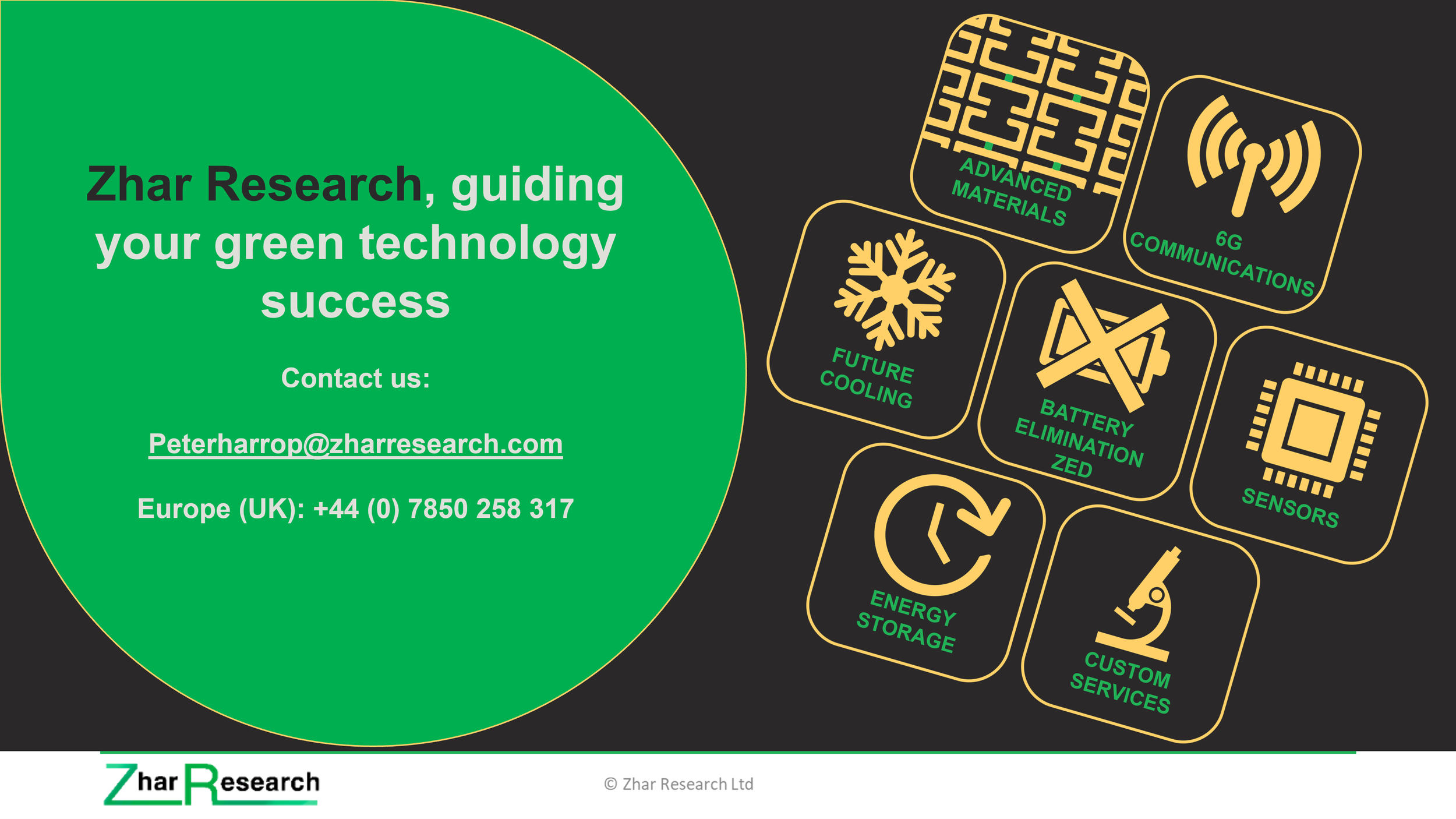
Contents List
-
1.1 Purpose of this report
1.2 Methodology of this analysis
1.3 Primary conclusions
1.4 Results of this research and market study by six device sectors and SWOT appraisal
1.5 Primary focus by application of 460 vanadium compound research papers examined for electrics and electronics
1.6 Primary focus by vanadium compound of research papers examined beyond RFB
1.7 Research focus of vanadium compounds for ion batteries
1.7.1 Nine leading formulations prioritised
1.7.2 Nine device types prioritised
1.8 Research focus of vanadium compounds for supercapacitors and variants
1.8.1 Nine leading formulations prioritised
1.8.2 Three device types prioritised
1.9 Research focus of vanadium compounds for solid state cooling, heat prevention and smart windows:
1.9.1 Four leading formulations prioritised
1.9.2 Three leading functions and devices prioritised
1.10 Research focus of vanadium compounds for other purposes:
1.10.1 Six leading formulations prioritised
1.10.2 Nine leading devices prioritised
1.11 Market forecasts in 58 forecast lines 2024-2044
1.11.1 Vanadium compounds for electrics, electronics, cooling: market $ billion 2024-2044 if successful
1.11.2 Vanadium compounds for electrics, electronics by 5 devices $ billion 2024-2044 if successful
1.12 Forecasts for equipment targetted for adoption of vanadium compounds
1.12.1 RFB equipment global value market short term, LDES and total VRFB $ billion 2024-2044 table and graphs
1.12.2 Vanadium vs iron vs other RFB equipment markets % 2024-2044 table, graph, explanation
1.12.3 RFB equipment global value market grid vs beyond-grid 2023-2044 table, graph, explanation
1.12.4 RFB global value market short term and LDES $ billion 2023-2044 table, graph, explanation
1.12.5 Regular vs hybrid RFB % value sales 2024-2044
1.12.6 Regional share of RFB value market in four regions 2024-2044
1.12.7 Global solid-state cooling equipment market forecasts: by function and equipment types 2024-2044
1.12.8 Global solid state cooling hardware forecasts by material categories and region 2024-2044 table, graphs, explanation
1.12.9 Supercapacitors and variants equipment market by five types $ billion 2024-2044 table, graph, explanation
1.12.10 Supercapacitors and variants equipment value market percent by five applications 2024-2044: table, graph
-
2.1 Overview
2.2 Liquid vanadium compounds in different oxidation states
2.3 The most promising solid vanadium compound structures
2.3.1 General situation
2.3.2 Vanadium oxides structures
2.3.3 Vanadium chalcogenides structures
2.3.4 Vanadium perovskites structures
2.3.5 Vanadium 2D compounds
2.3.6 Other examples of the phases, morphologies and formats being researched
2.4 Advances in fabrication by format
-
3.1 Overview
3.2 SWOT appraisal of 6G Communications as currently understood
3.3 Competitive position of vanadium compounds in 6G Communications development
3.4 The priority of vanadium compounds in 6G research
3.5 Vanadium compounds and the Terahertz Gap
3.6 Research pipeline analysis of vanadium compounds for 6G, THz and metasurfaces
3.6.1 Metasurfaces for THz beam steering including 6G RIS
3.6.2 Vanadium compounds for other terahertz applications: metadevices, SLM, SHE, other
3.6.3 Outstanding recent research papers relevant to 6G THz RIS
3.6.4 Vanadium compounds for other terahertz applications: metadevices, SLM, SHE, other
-
4.1 General introduction – appropriate needs and technology choices 4.1.1 Needs
4.1.2 Technology choices for supercapacitors and their variants
4.1.3 Vanadium compounds favoured in recent research on supercapacitors and their variants
4.1.4 Technology choices
4.2 Three SWOT appraisals of supercapacitors and their variants
4.3 Strategies for improving supercapacitors and their variants
4.4 Where vanadium compounds come in
4.5 Analysis of vanadium-related research pipeline for supercapacitors in 2024
4.6 Analysis of vanadium-related research pipeline for supercapacitors in 2023 and earlier
4.7 Understanding pseudocapacitance and its optimisation in pseudocapacitors
4.8 Analysis of vanadium-related research pipeline for pseudocapacitors in 2024
4.9 Understanding battery-supercapacitor hybrids (hybrid-ion capacitors, asymmetric supercapacitors
4.10 Analysis of vanadium-related BSH research pipeline in 2024
4.11 Analysis of vanadium-related BSH research pipeline in 2023 and earlier
-
5.1 Overview
5.1.1 Anatomy
5.1.2 How vanadium chemistry competes in redox flow batteries RFB including hybrids
5.1.3 13 primary conclusions concerning RFB markets and the place of vanadium compounds
5.2 Basic RFB hardware design and latest vanadium-related research
5.2.1 The vanadium electrolyte tanks in context
5.2.2 Footprint reduction influences use of vanadium compounds
5.2.3 Toxigen issues to tackle and effect on vanadium compounds
5.2.4 Vanadium RFB design
5.2.4 Vanadium in hybrid RFB
5.3 19 more-detailed conclusions concerning RFB technologies
5.4 Latest commercial trends with vanadium RFB vs alternatives
5.5 48 RFB and RFB vanadium manufacturers compared in 8 columns: name, brand, technology, tech. readiness, beyond grid focus, LDES focus, comment (90 pages)
-
6.1 Overview
6.2 Vanadium compounds in recent ion battery research
6.3 Number of important research papers on vanadium compounds by battery chemistry
6.4 The vanadium oxide toolkit for ion batteries
6.5 Vanadium compounds in aluminium-ion battery research
6.6 Vanadium compounds in ammonium-ion battery research
6.7 Vanadium compounds in calcium-ion battery research
6.8 Vanadium compounds in iron-ion battery research
6.9 Vanadium compounds in lithium-ion battery research
6.10 Vanadium compounds in magnesium-ion battery research
6.11 Vanadium compounds in potassium-ion battery research
6.12 Vanadium compounds in sodium-ion battery research
6.13 Vanadium compounds in zinc-ion battery research
-
7.1 Overlapping topics
7.2 Research analysis as an indicator of future vanadium compound demand
7.2.1 Analysis of vanadium compounds researched for solid state cooling, heat prevention and smart windows
7.2.2 Analysis of vanadium compounds research papers on these topics by application
7.3 The cooling toolkit
7.4 Report on the overall subject of solid-state cooling materials and devices
7.5 Vanadium compounds for solid state cooling
7.5.1 Reasons and the opportunities arising
7.5.2 SWOT appraisals of solid-state cooling in general and specific emerging versions
7.5.3 Attention vs maturity of cooling technologies 2024
7.6 Undesirable materials widely used and proposed: this is an opportunity for you
7.7 Vanadium compounds in research for smart windows and heat prevention
7.8 Analysis of vanadium-related research pipeline in 2024
7.9 Analysis of vanadium-related research pipeline in 2023 and earlier
-
8.1 Overview
8.2 Actuators and MEMS mirrors
8.3 Data storage and processing: transistors, diodes, memory, memristors, switches, other
8.3.1 Transistors and diodes
8.3.2 Memory and memristors
8.3.3 Electronic switches
8.3.4 Other data-related
8.5 Holography, electro-optics, electronic camouflage, zoom lenses, encryption etc.
8.6 Photovoltaics, solar cells, photodetectors
8.7 Sensors
460 vanadium-related research papers examined- 2024 and 2023 emphasis
423 pages
157 new infograms, graphs, comparison tables
85 companies examined
67 forecast lines 2024-2044
15 SWOT appraisals
8 chapters
The new commercially-oriented Zhar Research report, “Vanadium compounds in emerging electronics, electrics, cooling: markets, technologies 2024-2044” is designed to assist added value materials and device companies to maximise their opportunities. It will also assist investors, researchers and other interested parties.
Rapid market growth explained
The report calculates a startling eight-fold increase in market value for vanadium compounds in this sector. Today’s success is the liquid vanadium sulfate anolytes and catholytes in redox flow batteries, a strong growth market. Nonetheless, the imminent market growth for such compounds will substantially be driven by vanadium solids in sophisticated forms that add value. They will vary from 2D compounds, MXenes, graphene composites, vanadates, hollow nanospheres to intercalated cathodes, electrochromic windows and much more.
Commercially-oriented analysis
The 42-page Executive Summary and Conclusions makes easy reading for those with limited time because it has key conclusions and bar charts, tables and SWOT appraisal. See the most promising vanadium formulations and morphologies by future application then 58 forecast lines as graphs and tables.
Morphologies and formats being targeted
Next, the 17 pages of Chapter 2. “Vanadium compound formulations morphologies and formats becoming important in electronic, electric and thermal applications” clarifies the structures ahead and reasons why. Understand liquid vanadium compounds in different oxidation states and the most promising solid vanadium compound structures including as vanadium oxides, chalcogenides, perovskites, 2D compounds. Additionally, there are other examples of the phases, morphologies and formats being brought to market, with manufacturing approaches and many 2024 research references.
Major opportunity emerging in various forms of energy storage
The rest of the report has chapters on each of the sectors found to be important in driving that huge increase in sales, with latest company and research inputs and Zhar Research PhD level analysis. See drill down reports available from the company for your further reading on specifics. The first three chapters are concerned with the major vanadium opportunity emerging in various forms of energy storage.
Chapter 4. “Vanadium compounds in future supercapacitors, pseudocapacitors, Li-ion capacitors and other battery supercapacitor hybrids BSH” needs 77 pages to cover the massive progress here, with research and company activity sharply increasing in 2024. Learn the formulations and formats winning in supercapacitors, pseudocapacitors and battery-supercapacitor hybrids (lithium-ion capacitors but also others), the benefits and challenges remaining.
Chapter 5. “Vanadium compounds in future regular and hybrid redox flow batteries” is the longest because this is the only existing major commercial success for vanadium compounds in these sectors. See why it has great potential ahead. Although the typical vanadium sulfate electrolytes are mature technology with little further research, the large number of companies marketing these devices need to be covered including where they are headed next. There is also coverage of the research and commercial activity on hybrid RFB that employ vanadium compounds and the potential for that lesser opportunity for such compounds.
Logically, that is followed by Chapter 6. Vanadium compounds in future aluminium-ion. ammonium-ion, calcium-ion, iron-ion, lithium-ion, magnesium-ion, potassium-ion, sodium-ion and zinc ion batteries. Why are most of them suffering a trickle or research and little interest in commercialisation when it comes to vanadium-based options? In sharp contrast, which one has a rising flood of research and intense commercial interest in the vanadium-based approach? What is in-between and why?
Solid-state cooling, heat prevention, and smart windows
Then we move away from energy storage to the 42 pages of Chapter 7. “Vanadium compounds in future solid-state cooling, heat prevention, and smart windows”.
Again there is a lucid introduction to the subject followed by specifics from a commercial point of view with deep information from the research pipeline distilled to provide conclusions. With global warming and many new industrial, medical and transport processes needing cooling, this is the focus, not heating. See how it is now a many- faceted opportunity, from electrochromics and Passive Daylight Radiative Cooling PDRC to smart windows. Which are the best opportunities for vanadium compounds and why? What is the competition? Clarity is provided by many new infograms, eight SWOT appraisals and assessment of latest company and research activity. A modest share of what will become a very large market awaits.
And much more ahead
The report closes with a catch-all on the rest, notably in electrics and electronics including vanadium compounds for solar panels, memory, memristors, transistors, actuators, MEMS and a considerable rollout of vanadium-based sensors. What types, why, where, what else? Chapter 8. “Other applications of vanadium compounds in electronics and electrics” takes 35 pages to provide the answers and, again, a profusion of further reading, including 2024 research.


